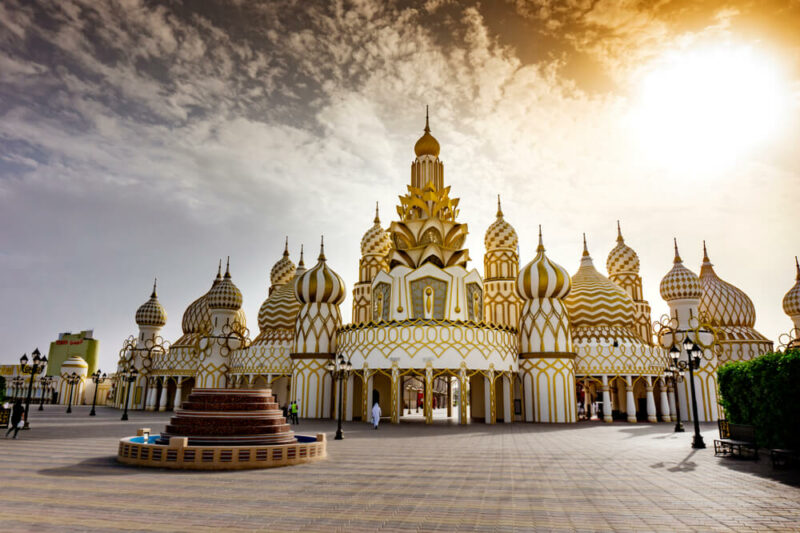
Global Village Unveiled: Navigating Unity in a Connected World
Outline
I. Introduction
A. Definition of a Global Village B. Evolution of the Global Village concept
II. The Impact of Technology
A. Connectivity across the Globe B. Social Media’s Role in Globalization C. Digitalization and its Effects on Communication
III. Cultural Exchange
A. Diversity in the Global Village B. Cultural Integration and Challenges
IV. Economic Interdependence
A. Global Trade and Commerce B. Cross-Border Business Partnerships
V. Environmental Considerations
A. Global Cooperation for Environmental Issues B. Impact of Human Activities on the Planet
VI. Challenges of the Global Village
A. Communication Barriers B. Socioeconomic Disparities C. Political and Diplomatic Challenges
VII. Future Trends
A. Technological Advancements B. Emerging Patterns in Global Governance
VIII. The Role of Individuals
A. Global Citizenship B. Social Responsibility
IX. Conclusion
A. Recap of the Global Village Concept B. The Continuing Evolution and Challenges Ahead
Global Village: Navigating the Connected World
Introduction
In a world that’s more interconnected than ever before, the concept of a Global Village has become increasingly relevant. This term, coined by Marshall McLuhan in the 1960s, describes a world where communication and information flow seamlessly across borders, creating a sense of unity among people. As we dive into the 21st century, the Global Village is not just a theory but a reality shaped by technological advancements, cultural exchange, economic interdependence, and environmental considerations.
The Impact of Technology
Connectivity across the Globe
The backbone of the Global Village is undoubtedly technology. The internet and telecommunications have bridged gaps, enabling instantaneous communication irrespective of geographical distances. This unprecedented connectivity has transformed the way we interact, share ideas, and conduct business on a global scale.
Social Media’s Role in Globalization
Social media platforms have played a pivotal role in shaping the Global Village. They serve as virtual meeting places where individuals from different corners of the world can share their thoughts, experiences, and cultures. Social media has not only connected people but has also become a powerful tool for cultural exchange and activism.
Digitalization and its Effects on Communication
The digital era has brought about a paradigm shift in communication. From emails to video calls, the ability to communicate in real-time has become seamless. This digital revolution has not only connected individuals but has also transformed industries, making information accessible to anyone with an internet connection.
Cultural Exchange
Diversity in the Global Village
One of the defining features of the Global Village is its cultural diversity. As borders blur, people from various backgrounds interact, creating a rich tapestry of traditions, languages, and lifestyles. This diversity is not without its challenges, as differing perspectives can lead to misunderstandings, requiring a delicate balance of respect and openness.
Cultural Integration and Challenges
While the Global Village celebrates diversity, it also poses challenges related to cultural integration. Harmonizing different cultural norms and values requires open-mindedness and a willingness to learn from one another. Striking this balance is essential for fostering a sense of global unity without erasing individual identities.
Economic Interdependence
Global Trade and Commerce
The Global Village has reshaped the economic landscape, fostering unprecedented levels of global trade and commerce. Businesses now operate on an international scale, forming partnerships that transcend borders. This interconnectedness has brought about economic benefits but also highlights the vulnerabilities that come with global interdependence.
Cross-Border Business Partnerships
Cross-border collaborations are a hallmark of the Global Village. Companies join forces across continents, leveraging each other’s strengths and resources. While these partnerships drive innovation and economic growth, they also necessitate navigating complex international regulations and cultural differences.
Environmental Considerations
Global Cooperation for Environmental Issues
As environmental challenges escalate, the Global Village concept extends to collaborative efforts for sustainable development. Issues like climate change and biodiversity loss require unified global strategies and cooperative solutions. The health of the planet is a shared responsibility that transcends national boundaries.
Impact of Human Activities on the Planet
The interconnectedness of the Global Village has led to a heightened awareness of the impact of human activities on the environment. From carbon emissions to resource depletion, the consequences of individual and collective actions reverberate globally. Sustainable practices and environmental consciousness are crucial for the well-being of the planet.
Challenges of the Global Village
Communication Barriers
Despite advancements, communication barriers persist in the Global Village. Language differences, technological disparities, and varying levels of digital literacy can impede effective communication. Addressing these challenges requires ongoing efforts to ensure inclusivity and accessibility.
Socioeconomic Disparities
The Global Village has not eradicated socioeconomic disparities. While some regions thrive in the interconnected world, others face economic challenges and struggle to access the benefits of globalization. Bridging these gaps requires a concerted effort to promote equitable opportunities and inclusive growth.
Political and Diplomatic Challenges
Navigating the complex political landscape of the Global Village presents its own set of challenges. Diplomatic relations, geopolitical tensions, and international conflicts underscore the need for effective global governance. Balancing national interests with global cooperation is an ongoing struggle.
Future Trends
Technological Advancements
The future of the Global Village is intertwined with technological advancements. Innovations in artificial intelligence, augmented reality, and quantum computing will further transform how we connect and collaborate. Staying ahead of these trends is crucial for individuals and businesses alike.
Emerging Patterns in Global Governance
The evolution of global governance structures will shape the trajectory of the Global Village. From addressing cybersecurity threats to managing public health crises, the need for effective international cooperation is evident. Adapting to emerging patterns in governance will be essential for navigating the challenges of tomorrow.
The Role of Individuals
Global Citizenship
In the Global Village, individuals are not just citizens of their respective countries but global citizens with shared responsibilities. Embracing a sense of global citizenship involves recognizing the interconnectedness of our actions and making choices that contribute to the well-being of the entire planet.
Social Responsibility
With great connectivity comes great responsibility. Individuals, communities, and businesses in the Global Village are increasingly aware of their social and environmental impact. Social responsibility is no longer confined to local communities but extends to global initiatives that promote sustainability and social equity.
Conclusion
In conclusion, the Global Village is a dynamic and evolving concept that encapsulates the interconnectedness of our world. While technology has been a driving force, the Global Village is also about fostering cultural understanding, addressing economic disparities, and collaborating to tackle global challenges. Navigating the complexities of this interconnected world requires a collective effort, with individuals playing a crucial role in shaping a sustainable and inclusive future.
FAQs
- What is the Global Village concept? The Global Village concept refers to a world where communication and information flow seamlessly across borders, creating a sense of unity among people.
- How has technology shaped the Global Village? Technology, particularly the internet and social media, has played a pivotal role in connecting people globally, transforming communication and fostering cultural exchange.
- What challenges does the Global Village face? Challenges include communication barriers, socioeconomic disparities, and political and diplomatic complexities that arise from global interdependence.
- Why is global citizenship important in the Global Village? Global citizenship involves recognizing our interconnectedness and taking collective responsibility for the well-being of the planet and its inhabitants.
- How can individuals contribute to the Global Village? Individuals can contribute by practicing social and environmental responsibility, fostering cultural understanding, and participating in global initiatives that promote sustainability and equity.




